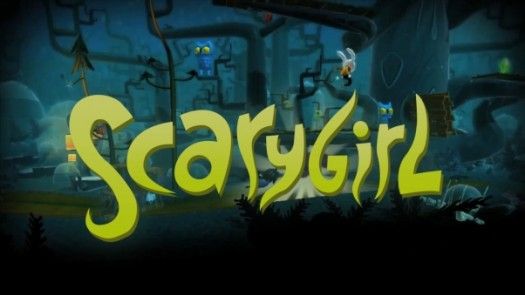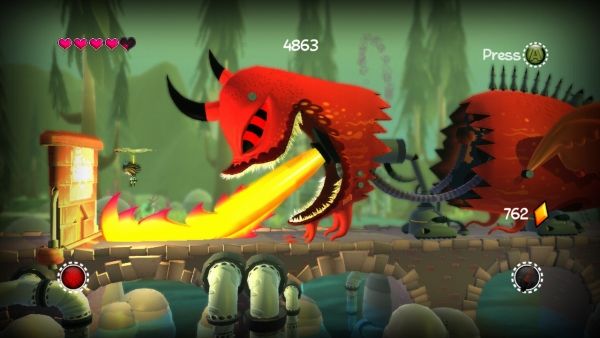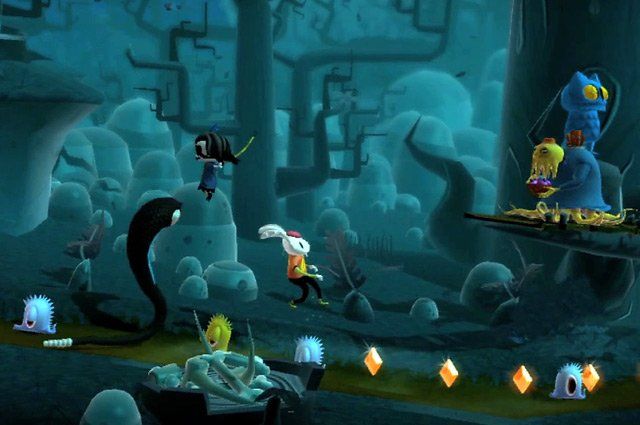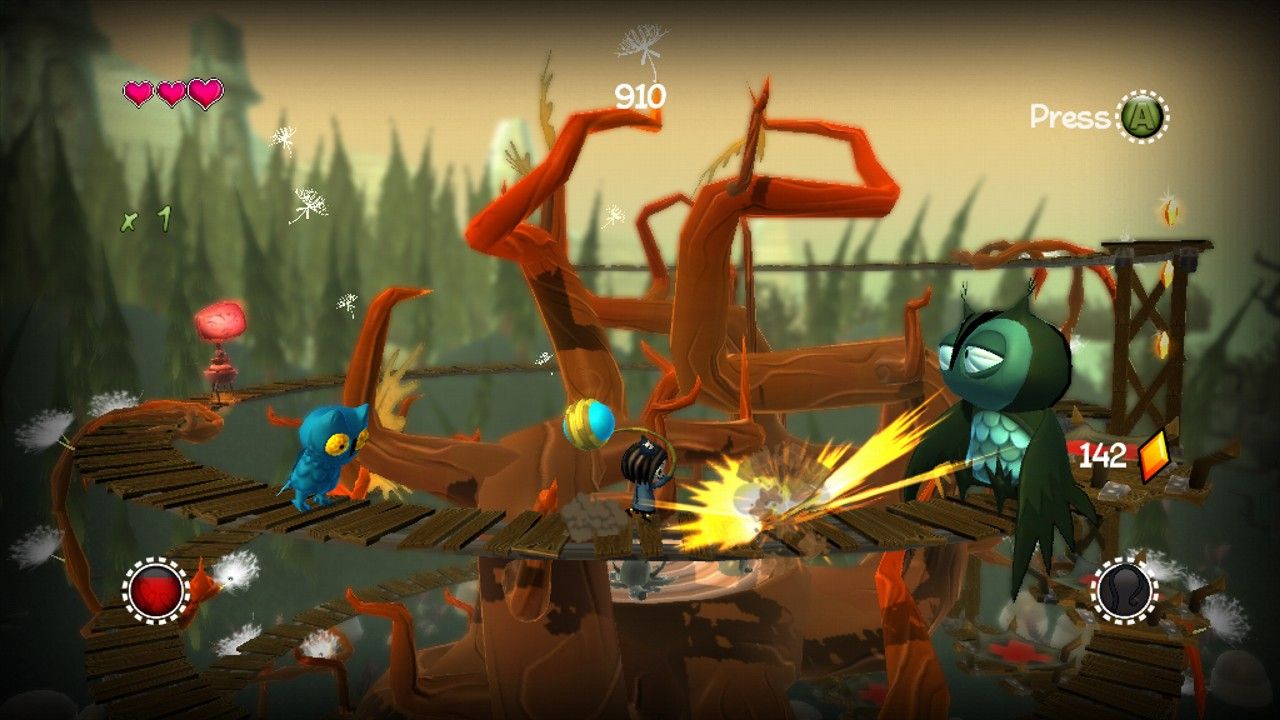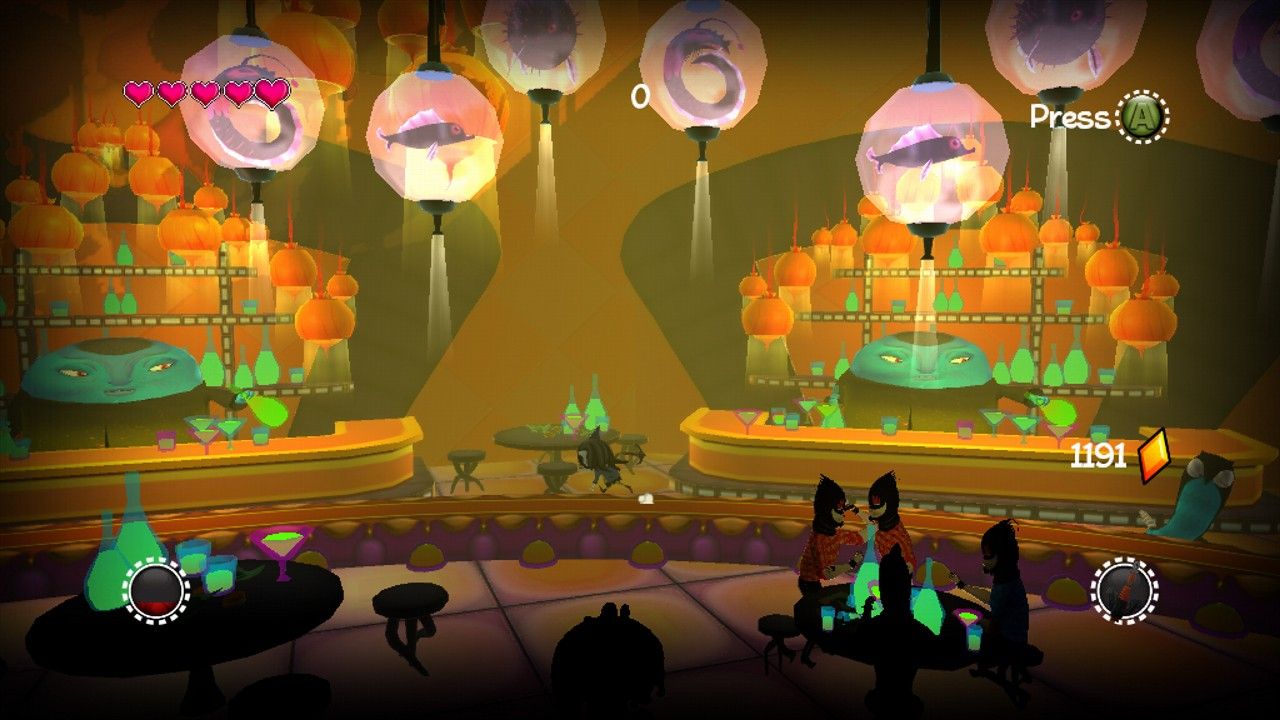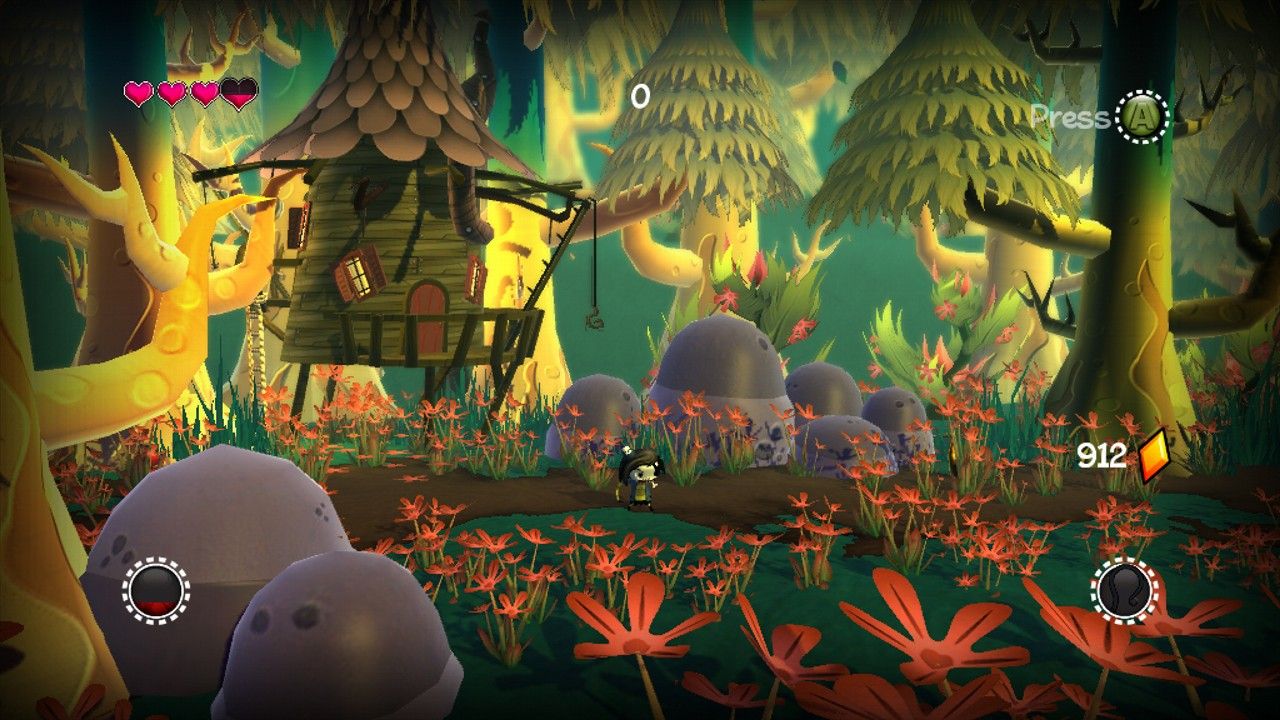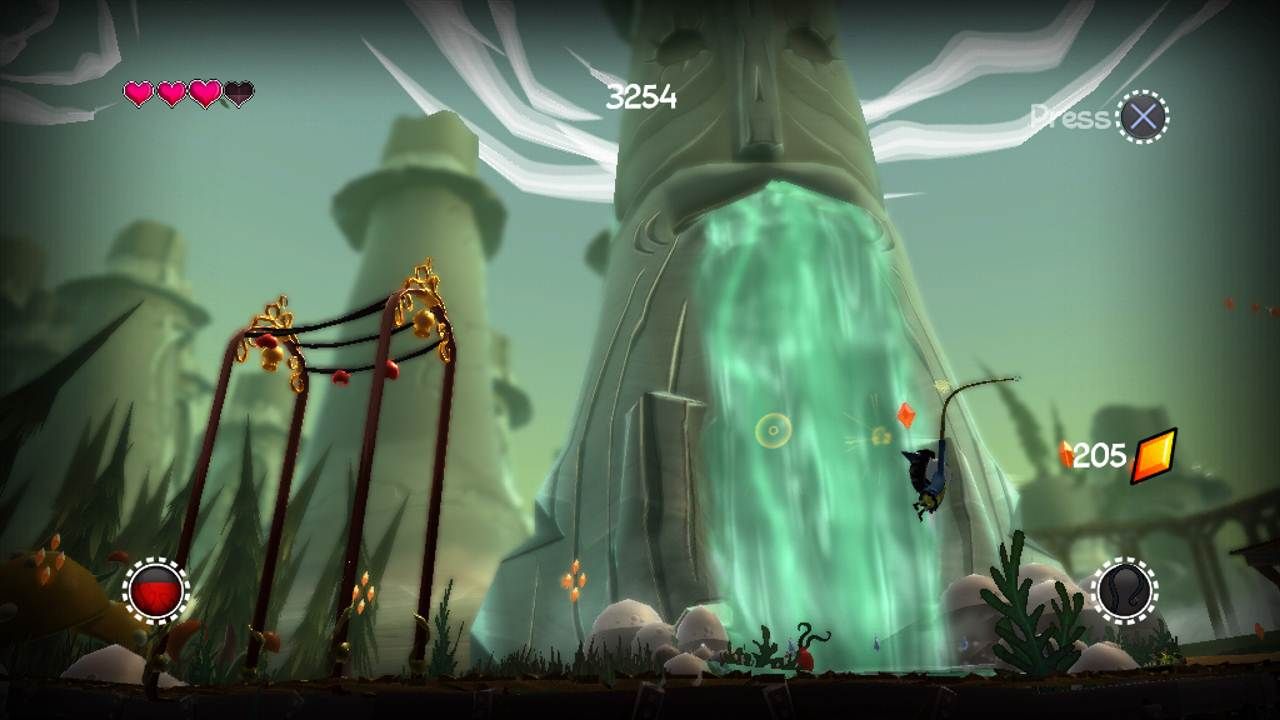When did things that were meant to be gross, frightening and spooky begin turning nastily cute? Even though Scarygirl’s limbs are pure bone and her mouth looks as though it’s been stitched shut before, you’d be hard pressed to call her ugly by any means. For fans of Nathan Jurevicius’ graphic novel, the PlayStation Network and Xbox Live Arcade have recently received a 2.5-D adventure starring everyone’s favorite heroine who wields a tentacle arm.
Some platformers pride themselves on providing players near-limitless worlds to explore. Others feature dynamic action sequences where you’re required to master various combos to take on myriad enemies. And still others contain challenging platforming segments that require equal parts patience, fervor and skill.
Scarygirl attempts to incorporate all three elements into one package, falling short in just about every category while featuring a pleasing aesthetic.
The game doesn’t deviate far from the standard action-platformer formula: You run toward the right side of the screen, sometimes vertically, too, and stop when you reach the end of the stage. Beat up enemies who get in your way and collect gems to buy upgrades when you come across the in-game store.
Our protagonist has two different attacks: light and strong. Light attacks, although weak, are easy to pull off in rapid succession. Strong attacks stall a bit but pack a bigger punch and allow Scarygirl to toss opponents into the air to juggle them.
As you progress through the game, combos become available for purchase in the game store. Of course, stronger movesets are only available in later levels to keep things in balance. Augments for Scarygirl’s tentacle arm are also gradually unlocked for purchase. These extensions range from a wooden anchor that strengthens melee attacks while slowing combo rhythm to a leaf that allows our heroine to remain airborne longer.
It’d be nice if the store were available outside the few levels in which it’s located. Buying powerups shouldn’t require players to trudge halfway through a stage. Even worse, the game doesn’t automatically save your new upgrades or gem balance, demanding you repeat the entire transaction.
One tenet of any good action-adventure title is its balance of risks and rewards. Dare to venture off the beaten path and you can often find hidden goodies or a health powerup or two. Horde currency and, even if you have to pass up useful powerups, the stronger wares you find later on are worth the wait. Not so with Scarygirl.
There are plenty of nooks and crannies to explore during the main game. In some areas you’re forced to dodge obstacles as they drop into crevices. In others you scale ever-rising platforms in order to reach a small cache of gems and the way to the end of the stage.
In fact, there’s little depth to the platforming in Scarygirl. Press the jump button once and your character leaps as high as possible. There are no short hops. Although it’s something you get used to after awhile, it makes the game feel floaty, which wouldn’t be a problem if it weren’t for the fact that there are several segments that demand quick, fluid action.
There are areas where Scarygirl employs her tentacle arm as a grapple hook of sorts. Whenever you see a purple aura emit from a pole or enemy, you can hold the right trigger and swing away. Enemies may be tossed into one another or slammed on the ground, the latter being particularly satisfying. When latched on to a pole, Scarygirl swings nonchalantly, waiting for you to release the right trigger so she can move on to the next platform or grapple target.
There doesn’t seem to be much variety in Scarygirl’s trajectory upon releasing her target. Let go of the right trigger at any moment and whatever direction you’re swinging is where she keeps going, rarely ascending at anything other than about a 40-degree angle.
The combo system, although nice and simple, suffers from inconsistencies in the gameplay. At the game’s outset, enemies are weak, providing little challenge to even the most novice of players. After the fourth world, however, baddies wielding swords, axes and various other weapons emerge, requiring tactics beyond constant punching. At first these strategic shake-ups seem a relief: It’s always refreshing when these games ask players to employ strategy.
For every enemy dispatched, a meter in the bottom-lefthand corner of the screen fills a bit. When it’s full, a press of the select button puts Scarygirl into a rage, turning all of her attacks into an immensely powerful bite that makes her resemble a sandworm from Beetlejuice.
Unfortunately, inconsistent enemy behavoir leads to frustrating battles around the game’s midpoint. Sometimes they’ll stand dutifully, waiting for Scarygirl to give ‘em the old one-two before popping out of existence. During other moments they’ll charge with no mercy, allowing no room for a strategy outside of spamming strong combos that summon overpowered tentacles and other environmental hazards for your foes.
Once again, Scarygirl has a penchant for taking something poorly-executed and making it worse by providing repetition. The most aggravating fights are the ones in which you face six, seven, even ten enemies at a time. And once you get past World 5, you can forget about any sort of mercy from the foes onscreen.
If the game has one thing going for it, an increasing level of difficulty persists until the very end. There are times when I admired this, particularly when it came to rigorous platforming segments that required precise timing. But when it came to fighting, I never felt accomplished as much as I did fortunate that no enemy broke out of a combo long enough to get in a lucky strike.
The story behind Scarygirl’s quest isn’t anything that will appeal much to anyone who isn’t a fan of the comic. It’s told through short cutscenes between stages and narrated wonderfully, but never evolves past the fact that you’re on your way to Bad City in order to find out what happened to Treedweller.
Playing with a friend makes the enjoyable quite a bit more enjoyable. All they need to do is pick up a spare controller, turn it on and press the jump button. Your pal controls Bunniguru, who controls much like Scarygirl but doesn’t receive any of her augments. Having a friend along for the ride also makes the hordes of enemies in later stages more manageable as well, even if your foes’ behavior remains inconsistent.
The relationship between player and game in any title becomes evident after completing a few stages. Unfortunately, Scarygirl never seemed to be very excited with what I had to offer. It’s as though I took her out on a date and, although she agreed to come and the evening held the promise of a good-night kiss at the end, it felt like a payoff she made begrudgingly in exchange for a free meal, not because she enjoyed herself.
Well, I know there are plenty of other platformers out there that’ll be more than happy to have me. As far as gameplay goes, these titles offer greater rewards for the risks you take and mechanics that aren’t frustratingly inconsistent.
At the end of the day, Scarygirl is a good-looking game with fairly basic gameplay. It’s not broken by any means, but it’s not terribly exciting and I don’t feel as though it’s an experience I’ll revisit any time soon. There’s not enough to set the game apart from its contemporaries and I can’t really recommend it for anyone who isn’t curious about how their favorite tentacle-armed heroine does in a different medium.

